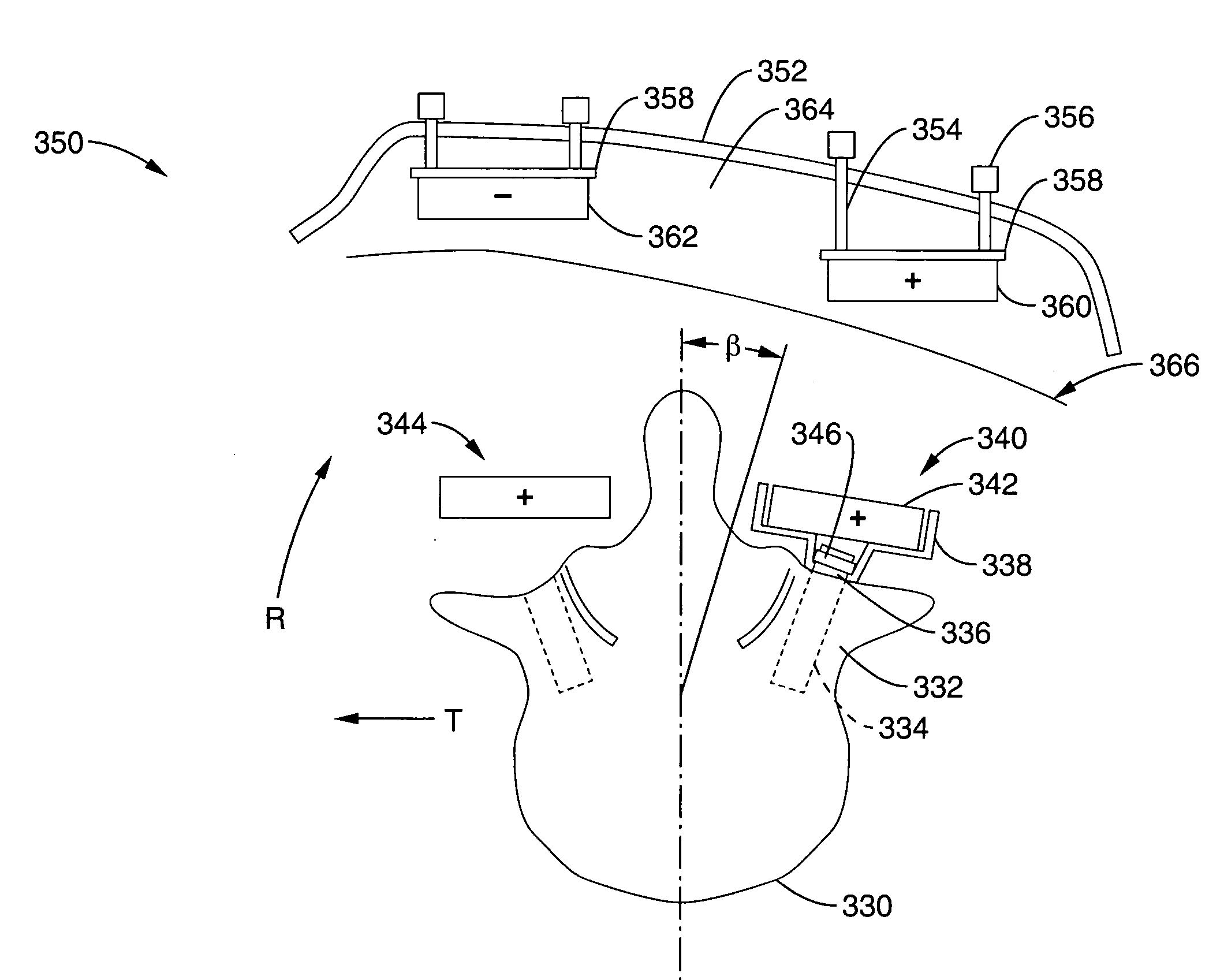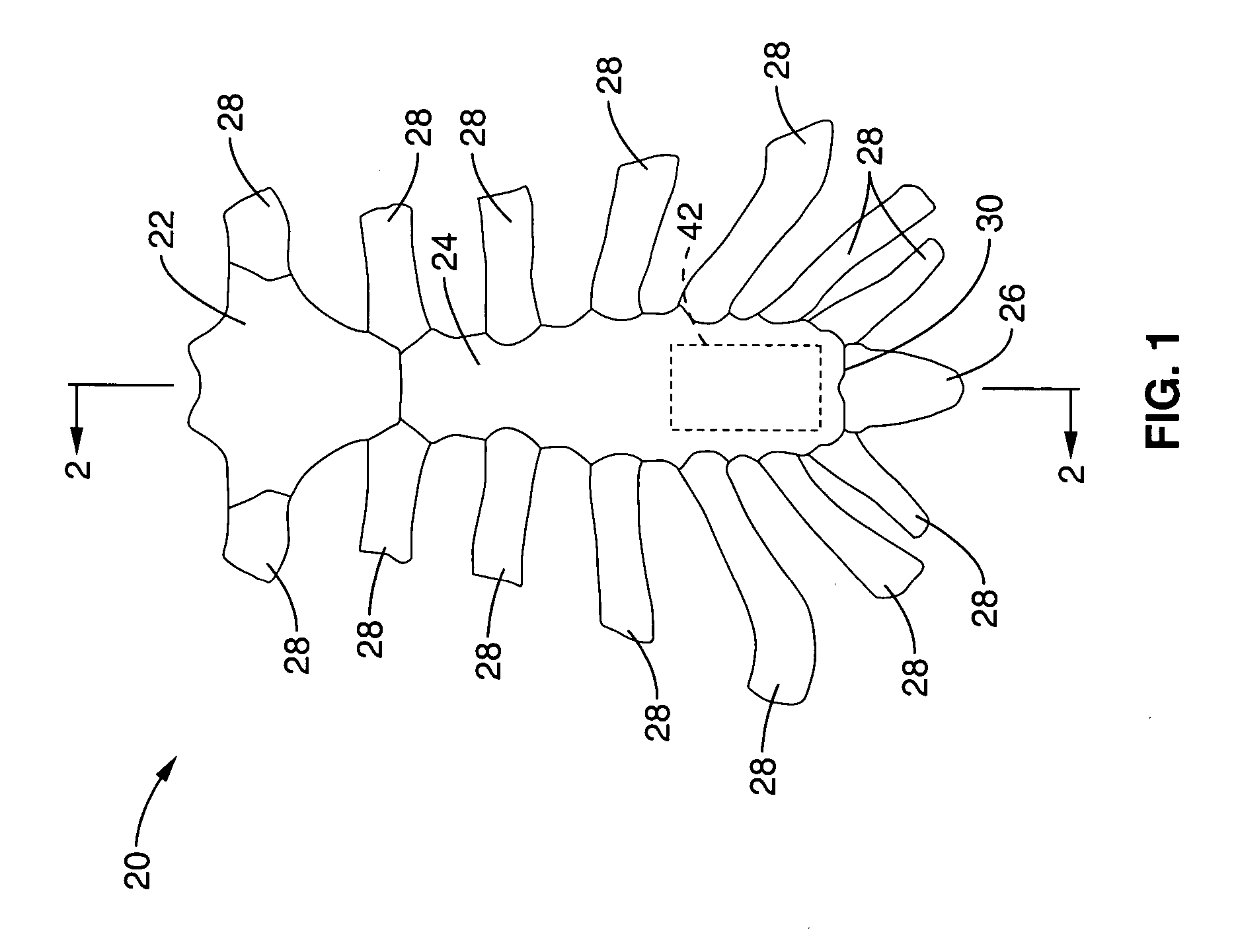Apparatus and methods for magnetic alteration of anatomical features
a technology of anatomical features and apparatuses, applied in the field of apparatuses and methods for magnetically manipulating body structures, can solve the problems of considerable morbidity, affecting patient morbidity, and attempting to achieve immediate total correction and fixation often under considerable tension
- Summary
- Abstract
- Description
- Claims
- Application Information
AI Technical Summary
Benefits of technology
Problems solved by technology
Method used
Image
Examples
Embodiment Construction
[0130] Referring more specifically to the drawings, for illustrative purposes the present invention is embodied in the apparatus an methods generally shown in FIG. 1 through FIG. 17 and FIGS. 21-26 and 28-40. It will be appreciated that the apparatus may vary as to configuration and as to details of the parts, and that the methods may vary as to the specific steps and sequence, without departing from the basic concepts as disclosed herein.
[0131] The present invention utilizes a system in which a small magnet is implanted in cooperation with an internal body member to apply a corrective force to the body member by virtue of its attraction to an adjustable magnet in an external device that is comfortable and cosmetically pleasing.
[0132] Small rare earth metal magnets can produce considerable force and can be manipulated in terms of size, shape and position. This force can be used to alter growth and development of skeletal structure and soft tissue. The biology of tissue response to...
PUM
 Login to View More
Login to View More Abstract
Description
Claims
Application Information
 Login to View More
Login to View More - R&D
- Intellectual Property
- Life Sciences
- Materials
- Tech Scout
- Unparalleled Data Quality
- Higher Quality Content
- 60% Fewer Hallucinations
Browse by: Latest US Patents, China's latest patents, Technical Efficacy Thesaurus, Application Domain, Technology Topic, Popular Technical Reports.
© 2025 PatSnap. All rights reserved.Legal|Privacy policy|Modern Slavery Act Transparency Statement|Sitemap|About US| Contact US: help@patsnap.com



